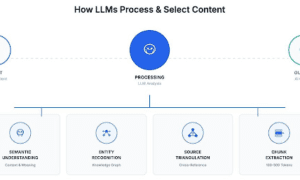Welcome to our blog post on the key to sustainable development! In today’s world, where environmental concerns and social issues take center stage, it is crucial for us to delve deeper into what makes a truly sustainable society. And that’s where the concept of the 4Cs comes in: collaboration, conservation, community, and consumption. By understanding and implementing these four cornerstones of sustainability in our daily lives and decision-making processes, we can pave the way towards a brighter and greener future for generations to come. So grab your eco-warrior hats as we embark on an exciting journey exploring each C in detail, uncovering practical tips, inspiring success stories, and thought-provoking insights along the way.
What are the 4 Cs of sustainability?
The 4Cs of sustainability are: clean energy, climate change, conservation, and wise use. Clean energy is the use of affordable, environmentally friendly resources to generate electricity. Climate change is the gradual increase in Earth’s average surface temperature that can be attributed to human activities, including the burning of fossil fuels and emissions from landfills. Conservation is the use and efficient management of natural resources with the ultimate goal of preserving biodiversity. Wise use is a comprehensive approach to managing natural resources that takes into account economic costs, social impacts, and environmental integrity.
The 4Cs of sustainability are important because they help us think about ways to sustain our environment and protect our resources.
The 4 Cs of Sustainable Development
The four key concepts in sustainable development are:
1. Conservation: protecting natural resources and ensuring that they are used in a way that does not harm the environment.
2. Sustainable use: using resources efficiently while taking into account the long-term effects of their use on the environment.
3. Community involvement: Involving people in decision-making about how to use resources sustainably so that they have a vested interest in doing so
4. Financing sustainability: supporting initiatives that reduce environmental impact or promote sustainable development financially
Sustainable development is a movement to develop practices and policies that allow societies to meet the needs of the present without compromising the ability of future generations to meet their own needs.
How do the 4Cs of sustainability relate to each other?
The 4Cs of sustainability can be summarized as follows:
1. Conservation: Meeting the needs of the present without compromising the ability of future generations to meet their own needs
2. Creation: Making choices that maintain and enhance resources while reducing pollution and waste
3. Commerce: Operating in a way that benefits society and the environment
4. Cooperation: Working together to achieve common goals
How to Integrate the 4 Cs into Our Everyday Lives
The 4 stands for creativity, conscience, courage, and care. Integrating these into our everyday lives can help us become more fulfilled and productive. We can use these principles to create a lifestyle that is conducive to our values and helps us achieve our goals.
1. Use creativity to come up with new ideas and solutions to problems.
2. Conscience is important when making decisions that affect our own well-being or the well-being of others.
3. Courage is essential when facing difficult challenges or overcoming fear.
4. Care provides support and compassion in times of need.
Conclusion
As we move further into the 21st century, it is more important than ever to examine our approach to sustainable development. In this article, we have explored each of the four pillars of sustainable development in detail: economic, social, environmental, and cultural. By understanding these concepts and how they work together, we can begin to make strides towards a more sustainable future.





























